Are you looking to boost your brainpower and make smarter decisions? The key might be in sharpening your critical thinking skills. It’s more than just memorizing facts; it’s about deeply understanding information and using it to solve problems. So many people struggle with this, lost in surface-level thoughts and opinions. How can you break free and truly learn?
This article isn’t a shallow dive; we’re going deep. It’s for students who want to develop real analytical skills, the kind that helps you succeed in school, work, and life. Inside, you’ll find practical exercises and strategies that will turn you into a master of critical thinking. We will see how they can help to foster deep and durable learning.
Ready to unlock your full potential? Keep reading to discover critical thinking exercises that will transform the way you learn.
Critical Thinking: A Key to Deep Learning
What is critical thinking, and why is it so important for deep learning? Simply put, it is the ability to analyze information objectively and form a judgment. It involves evaluating sources, identifying assumptions, detecting bias, and constructing reasoned arguments. Instead of passively accepting information, critical thinking encourages you to question, explore, and understand the underlying meaning.
Deep learning, on the other hand, goes beyond rote memorization. It’s about truly understanding concepts, connecting them to existing knowledge, and applying them in new situations. When you engage in critical thinking, you are actively constructing your own understanding, making the learning process more meaningful and lasting.
The Benefits of Critical Thinking for Students
For students, critical thinking offers a multitude of benefits:
- Improved Comprehension: By questioning and analyzing information, you gain a deeper understanding of the subject matter.
- Enhanced Problem-Solving: Critical thinking equips you with the skills to approach problems logically and creatively, finding effective solutions.
- Better Decision-Making: Evaluating evidence and considering different perspectives allows you to make more informed and reasoned decisions.
- Increased Creativity: Critical thinking encourages you to think outside the box, generating new ideas and approaches.
- Greater Independence: By developing your own judgments, you become a more independent and self-directed learner.
Exercises to Sharpen Your Critical Thinking Skills
Ready to put critical thinking into practice? Here are some exercises you can incorporate into your studies and daily life:
1. Socratic Questioning
This technique involves asking probing questions to explore the underlying assumptions and implications of a statement or argument. It’s named after the Greek philosopher Socrates, who used this method to challenge conventional thinking and stimulate critical thinking.
How to Practice:
- Choose a Topic: Select a topic you’re studying or an issue you’re interested in.
- Ask Open-Ended Questions: Instead of asking questions with simple “yes” or “no” answers, pose open-ended questions that encourage deeper reflection.
- Follow Up with Probing Questions: After each answer, ask further questions to explore the reasoning, evidence, and assumptions behind the response.
Example:
- Topic: The benefits of online learning.
- Initial Question: What are the advantages of online learning compared to traditional classroom learning?
- Follow-Up Questions:
- What evidence supports the claim that online learning is more accessible?
- What are the potential drawbacks of relying on technology for education?
- How does the quality of online education compare to that of traditional education?
- What types of students might benefit most from online learning?
- What are the ethical considerations of expanding online education?
By engaging in Socratic questioning, you challenge assumptions, uncover hidden biases, and develop a more nuanced understanding of the topic.
2. Argument Mapping
Argument mapping is a visual technique for analyzing and evaluating arguments. It involves breaking down an argument into its component parts (premises, conclusions, and counter-arguments) and representing them in a diagram. This helps to clarify the structure of the argument and identify any weaknesses or fallacies.
How to Practice:
- Identify the Conclusion: Determine the main point or claim being argued.
- Identify the Premises: Identify the reasons or evidence offered to support the conclusion.
- Map the Connections: Draw arrows to show how the premises support the conclusion.
- Identify Counter-Arguments: Identify any objections or opposing viewpoints.
- Evaluate the Strength of the Argument: Assess the validity and reliability of the premises and the strength of the connections between them.
Example:
Let’s map the argument that “Social media has a negative impact on mental health.”
- Conclusion: Social media has a negative impact on mental health.
- Premises:
- Social media exposes users to unrealistic portrayals of others’ lives.
- Social media encourages social comparison and feelings of inadequacy.
- Social media can be addictive and lead to excessive screen time.
- Social media can facilitate cyberbullying and harassment.
- Counter-Arguments:
- Social media can provide a sense of community and social support.
- Social media can facilitate access to information and resources.
- Social media can be used to promote positive social change.
By mapping out the argument, you can see the connections between the premises and the conclusion. You can also assess the strength of the argument by considering the counter-arguments and evaluating the evidence supporting each claim.
There are many tools available online that allow you to create digital argument maps easily.
3. Bias Detection
Bias is a tendency to favor one perspective or viewpoint over others, often unconsciously. It can distort our perception of reality and lead to flawed judgments. Detecting bias is an essential skill for critical thinking.
How to Practice:
- Identify the Source: Determine the source of the information and its potential biases.
- Look for Loaded Language: Identify any emotionally charged words or phrases that may be used to sway opinion.
- Check for Selective Reporting: Look for any evidence that the information has been cherry-picked or presented in a way that favors one side of the story.
- Consider Alternative Perspectives: Seek out information from different sources and perspectives to get a more balanced view.
Example:
Imagine reading a news article about a proposed development project that quotes only developers and business owners. This article could have a bias in favor of the project. To detect this bias, you should:
- Identify the Source: The source is a news outlet that may be influenced by advertising revenue or political affiliations.
- Look for Loaded Language: The article may use phrases like “economic growth” and “community revitalization” to promote the project.
- Check for Selective Reporting: The article may fail to include the voices of residents who oppose the project due to concerns about traffic, noise, or environmental impact.
- Consider Alternative Perspectives: Seek out information from community groups or environmental organizations to get a more balanced view of the issue.
4. Identifying Assumptions
Assumptions are beliefs or ideas that are taken for granted, often without conscious awareness. They can influence our thinking and lead to flawed conclusions if they are not carefully examined.
How to Practice:
- Identify the Claim: Determine the main point or argument being made.
- Ask “What Must Be True?”: Ask yourself what beliefs or ideas must be true in order for the claim to be valid.
- Evaluate the Assumptions: Assess whether the assumptions are justified and supported by evidence.
- Consider Alternative Assumptions: Explore other possible beliefs or ideas that could undermine the claim.
Example:
Let’s analyze the statement “Investing in renewable energy is essential for a sustainable future.
- Claim: Investing in renewable energy is essential for a sustainable future.
- Ask “What Must Be True?”:
- That fossil fuels are unsustainable and harmful to the environment.
- That renewable energy sources are viable and can meet our energy needs.
- That a sustainable future is a desirable and achievable goal.
- Evaluate the Assumptions:
- Are fossil fuels truly unsustainable, and what are the alternatives?
- Are renewable energy sources cost-effective and reliable?
- What are the challenges of transitioning to a renewable energy economy?
- Consider Alternative Assumptions:
- Could technological advances make fossil fuels cleaner and more sustainable?
- Are there other factors besides energy that are more important for a sustainable future?
By identifying and evaluating these assumptions, you can develop a more nuanced understanding of the claim and its implications.
5. Constructing Reasoned Arguments
The ability to construct reasoned arguments is a cornerstone of critical thinking. It involves presenting a clear and logical case for your position, supported by evidence and reasoning.
How to Practice:
- State Your Conclusion: Clearly state the main point or claim you are arguing.
- Provide Supporting Evidence: Offer evidence, facts, statistics, and examples to support your conclusion.
- Explain Your Reasoning: Explain how the evidence supports your conclusion, using logical reasoning and clear language.
- Address Counter-Arguments: Acknowledge and address any objections or opposing viewpoints.
- Summarize Your Argument: Briefly summarize your main points and restate your conclusion.
Example:
Let’s construct a reasoned argument for the claim that “Governments should invest more in public transportation.”
- Conclusion: Governments should invest more in public transportation.
- Supporting Evidence:
- Public transportation reduces traffic congestion and commute times.
- Public transportation lowers greenhouse gas emissions and improves air quality.
- Public transportation provides affordable and accessible transportation options for low-income individuals.
- Public transportation stimulates economic development and job creation.
- Reasoning: By investing in public transportation, governments can address several pressing social, economic, and environmental challenges. Improved public transportation systems can reduce traffic congestion, making it easier for people to get to work and reducing the time they spend stuck in traffic. This not only saves time but also reduces fuel consumption and emissions. Furthermore, public transportation provides affordable transportation options for low-income individuals who may not be able to afford a car, improving their access to jobs, education, and healthcare. Finally, investing in public transportation can create jobs in construction, maintenance, and operation, stimulating economic growth.
- Address Counter-Arguments: Some argue that public transportation is too expensive and inefficient. However, the long-term benefits of reduced congestion, pollution, and improved accessibility outweigh the costs. Moreover, governments can improve the efficiency of public transportation systems by implementing better planning, routing, and technology.
- Summarize Your Argument: In conclusion, governments should invest more in public transportation because it offers significant social, economic, and environmental benefits. While there may be challenges and costs associated with public transportation, the long-term advantages make it a worthwhile investment for a sustainable and equitable future.
Integrating Critical Thinking into Your Studies
These critical thinking exercises are most effective when integrated into your regular study habits. Here are some ways to do so:
1. Active Reading
Instead of passively reading through textbooks and articles, engage in active reading by:
- Highlighting Key Points: Identify the main ideas and supporting evidence.
- Asking Questions: Question the author’s assumptions, biases, and conclusions.
- Summarizing in Your Own Words: Condense the information into your own language to ensure you understand it.
- Connecting to Prior Knowledge: Relate the new information to what you already know.
2. Collaborative Learning
Discussing concepts with classmates or study groups can enhance critical thinking by:
- Exposing You to Different Perspectives: Hearing other viewpoints can challenge your assumptions and broaden your understanding.
- Forcing You to Articulate Your Reasoning: Explaining your thinking to others can help you clarify your own ideas and identify any weaknesses in your arguments.
- Providing Feedback: Receiving feedback from others can help you identify biases and improve your reasoning.
3. Problem-Based Learning
Engaging in problem-based learning (PBL) can foster critical thinking by:
- Presenting Real-World Scenarios: PBL challenges you to apply your knowledge to solve complex, real-world problems.
- Encouraging Collaboration: PBL often involves working in teams to find solutions, promoting discussion and the exchange of ideas.
- Promoting Self-Directed Learning: PBL requires you to take responsibility for your own learning, seeking out information and resources to solve the problem.
The Role of Educators in Fostering Critical Thinking
Educators play a crucial role in fostering critical thinking skills in their students. Here are some strategies they can use:
1. Asking Thought-Provoking Questions
Teachers can encourage critical thinking by asking questions that challenge students to go beyond simple recall and engage in deeper analysis and reflection. Examples include:
- “What are the strengths and weaknesses of this argument?”
- “What are the underlying assumptions?”
- “What are the alternative perspectives?”
- “How could this information be applied in a different context?”
2. Encouraging Debate and Discussion
Creating a classroom environment where students feel safe to express their opinions and challenge each other’s ideas can foster critical thinking by:
- Exposing Students to Diverse Viewpoints: Hearing different perspectives can help students see issues from multiple angles.
- Developing Argumentation Skills: Learning to articulate and defend their positions can help students refine their reasoning skills.
- Promoting Intellectual Humility: Recognizing that there are other valid perspectives can help students become more open-minded and willing to learn.
3. Providing Feedback on Reasoning
Instead of simply grading students’ answers as right or wrong, teachers can provide feedback on their reasoning process, pointing out any flaws in their logic or evidence. This can help students:
- Identify Biases: Become aware of their own biases and assumptions.
- Improve Their Argumentation Skills: Learn to construct more persuasive and well-supported arguments.
- Develop a Growth Mindset: See mistakes as opportunities for learning and improvement.
4. Integrating Critical Thinking into Assessment
Teachers can assess students’ critical thinking skills by:
- Using Open-Ended Questions: Ask questions that require students to analyze, evaluate, and synthesize information.
- Assigning Research Projects: Have students conduct research, evaluate sources, and construct reasoned arguments.
- Using Rubrics That Emphasize Reasoning: Develop rubrics that assess students’ ability to identify assumptions, detect bias, and construct logical arguments.
Overcoming Challenges to Critical Thinking
While critical thinking is a valuable skill, it can also be challenging to develop and apply. Here are some common challenges and how to overcome them:
1. Confirmation Bias
Confirmation bias is the tendency to seek out and interpret information that confirms our existing beliefs, while ignoring or downplaying information that contradicts them.
How to Overcome:
- Actively Seek Out Opposing Viewpoints: Make a conscious effort to read and listen to perspectives that differ from your own.
- Challenge Your Own Assumptions: Question your beliefs and be willing to change your mind in light of new evidence.
- Be Open to Being Wrong: Recognize that you may not have all the answers and be willing to admit when you are mistaken.
2. Emotional Reasoning
Emotional reasoning is the tendency to base our beliefs and decisions on our feelings, rather than on objective evidence.
How to Overcome:
- Separate Feelings from Facts: Recognize that your feelings are not always accurate reflections of reality.
- Seek Out Objective Evidence: Gather facts and data to support or refute your beliefs.
- Consider Alternative Explanations: Explore other possible explanations for your feelings and behaviors.
3. Lack of Information
Critical thinking requires access to accurate and reliable information. A lack of information can hinder your ability to make informed judgments.
How to Overcome:
- Seek Out Credible Sources: Consult reputable sources, such as academic journals, government reports, and respected news organizations.
- Evaluate the Source: Assess the source’s credibility, bias, and accuracy.
- Consult Multiple Sources: Compare information from different sources to get a more balanced view.
4. Time Constraints
Critical thinking takes time and effort. When faced with time constraints, it can be tempting to take shortcuts and rely on quick judgments.
How to Overcome:
- Prioritize Critical Thinking: Recognize the importance of critical thinking and make time for it in your schedule.
- Break Down Complex Problems: Divide large, complex problems into smaller, more manageable tasks.
- Use Time Management Techniques: Employ techniques like the Pomodoro Technique to stay focused and productive.
The Future of Critical Thinking in Education
As the world becomes increasingly complex and interconnected, critical thinking will become even more essential for success. Educators must adapt their teaching methods to prioritize the development of these skills in their students. This may involve:
1. Integrating Technology
Technology can be used to enhance critical thinking by:
- Providing Access to Information: The internet provides access to a vast array of information and resources.
- Facilitating Collaboration: Online tools can facilitate collaboration and the exchange of ideas.
- Simulating Real-World Scenarios: Simulations and virtual reality can provide students with opportunities to apply their knowledge to solve real-world problems.
2. Emphasizing Creativity and Innovation
Critical thinking is not just about analyzing and evaluating existing information. It’s also about generating new ideas and solutions. Educators can foster creativity and innovation by:
- Encouraging Brainstorming: Facilitate brainstorming sessions where students can generate new ideas without fear of judgment.
- Promoting Design Thinking: Teach students the design thinking process, which involves empathizing, defining, ideating, prototyping, and testing solutions.
- Providing Opportunities for Experimentation: Create a classroom environment where students feel safe to experiment, take risks, and learn from their mistakes.
3. Promoting Lifelong Learning
Critical thinking is not a skill that is mastered once and then forgotten. It requires continuous practice and development. Educators can promote lifelong learning by:
- Instilling a Growth Mindset: Encourage students to see learning as a lifelong journey, not a destination.
- Providing Resources for Continued Learning: Share resources, such as books, articles, and online courses, that can help students continue to develop their critical thinking skills.
- Creating a Culture of Inquiry: Foster a classroom environment where students are encouraged to ask questions, explore new ideas, and challenge existing assumptions.
Is Critical Thinking Worth the Effort?
Critical thinking is a skill that offers lasting benefits. It can help you to understand the world around you, make better decisions, and achieve your goals. While there may be challenges along the way, the rewards are well worth the effort. By incorporating these exercises into your studies and daily life, you can sharpen your critical thinking skills and unlock your full potential. It gives you the tools to dissect ideas and build your own unique, informed perspectives. Isn’t that worth investing in?


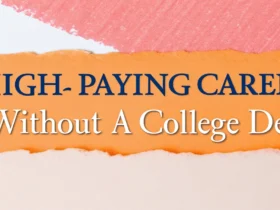

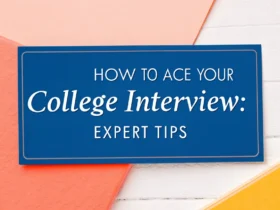
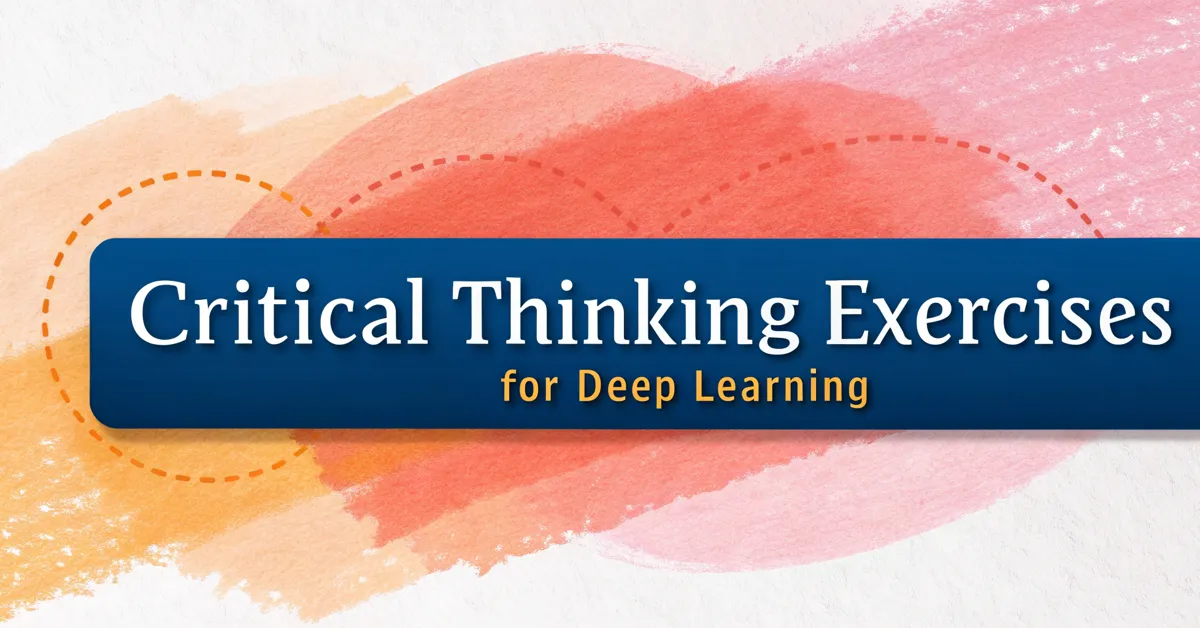





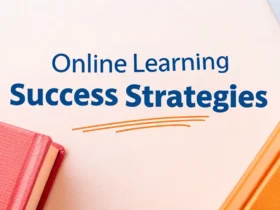
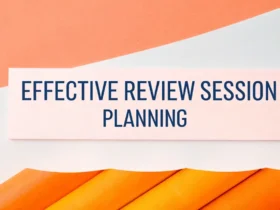
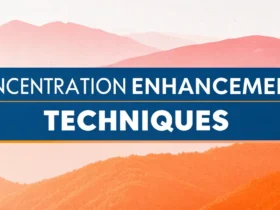
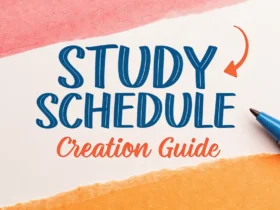
Leave a Reply
View Comments